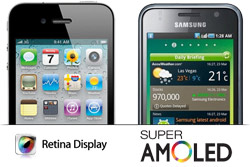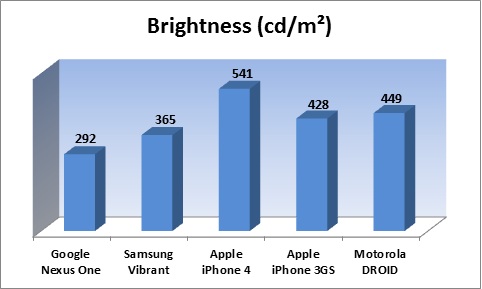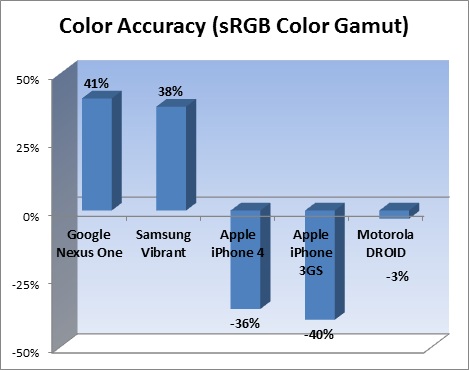 If you’ve wandered endlessly what display is best on the smatphones, its time to make them fight for the Performance.
If you’ve wandered endlessly what display is best on the smatphones, its time to make them fight for the Performance.
iPhone 4 Retina display was touted by Apple as the most advanced displays ever made for Mobiles. Buut aare samsung’s claims true that Super AMOLED featured in Samsung Galaxy S is better? These new displays promised to be brighter, less reflective, and consume less power than the previous generation of AMOLED, used in Google Nexus One.
DisplayMate has released their evaluation of the displays, and though they found the Super AMOLED to be excellent and awarded it “Best New Technology,” called the Apple iPhone 4 still has the best mobile display.
Google Nexus One vs. iPhone 4 s Motorola Droid vs Samsung Galaxy S
Samsung’s display was 25 percent brighter, used 20 percent less power and reflected less than a third as much ambient light as compared to normal AMOLED.
Te Super AMOLED possess incredible contrast and low screen reflectance. But “Super AMOLED’s contrast ratio is visually insignificant as compared to iPhone 4 retina display, except under dark ambient lighting.The report also highlights 14 ways the iPhone 4 has the best display. For instance, the iPhone’s LCD is the sharpest (with the Highest Resolution i.e. most pixels per inch)
Here is the report in brief, summarizing five of Soneira’s results: brightness, contrast, screen reflectance, color accuracy, and power consumption.
The Super AMOLED reflected the least ambient light out of any display. This is also an important factor for viewing outdoors; the least reflective screen shows the least amount of glare.
The Super AMOLED on the Samsung Vibrant was 25 percent brighter than the AMOLED on the Google Nexus One. However, the iPhone 4’s LCD was the brightest. The brighter the screen, the easier it is to view the display in bright environments (like outdoors on sunny days.)
When all displays were set to the same level of brightness (229 cd/m2), the Super AMOLED consumed 20 percent less power than the AMOLED, but iPhone 4’s LCD used even less power.
The AMOLED on the Google Nexus One had lower black levels, which resulted in the highest contrast, though Soneria considered the contrast on the the AMOLED and Super AMOLED outstanding.
The LCD on the Motorola DROID offered the most accurate representation of the sRGB color gamut. Colors on the Super AMOLED were oversaturated by 38 percent percent, and on the iPhone’s LCD were undersaturated by 36 percent.
Verdict
At most practical things, he Retina Display really whoops on the Super AMOLED on the pixel level. Definition still looks ridiculous on the iPhone 4. The Super AMOLED seems to exhibit stronger color saturation and sharper definition, in spite of looking pixelated sat next to Apple’s smoother resolution. BUT, when viewed from a normal distance away from the user, and it will look identical, difference is saturation and contrast.
We write about Latest in tech, Google, iPhone, Gadgets, Open Source, Programming. Grab them all@taranfx on Twitter or below:
loading...
loading...





